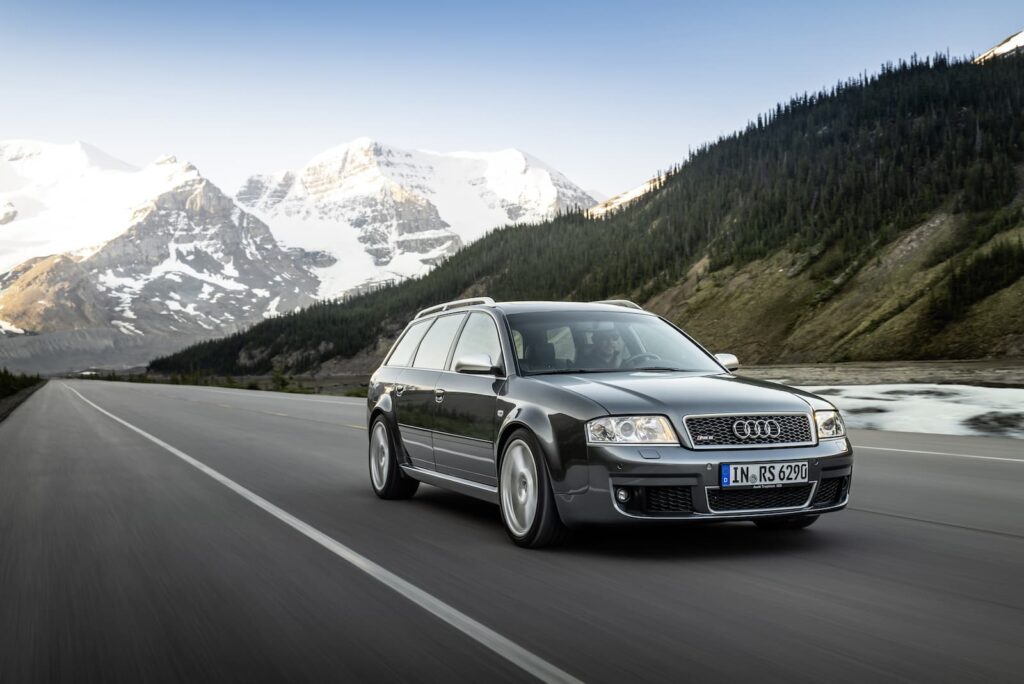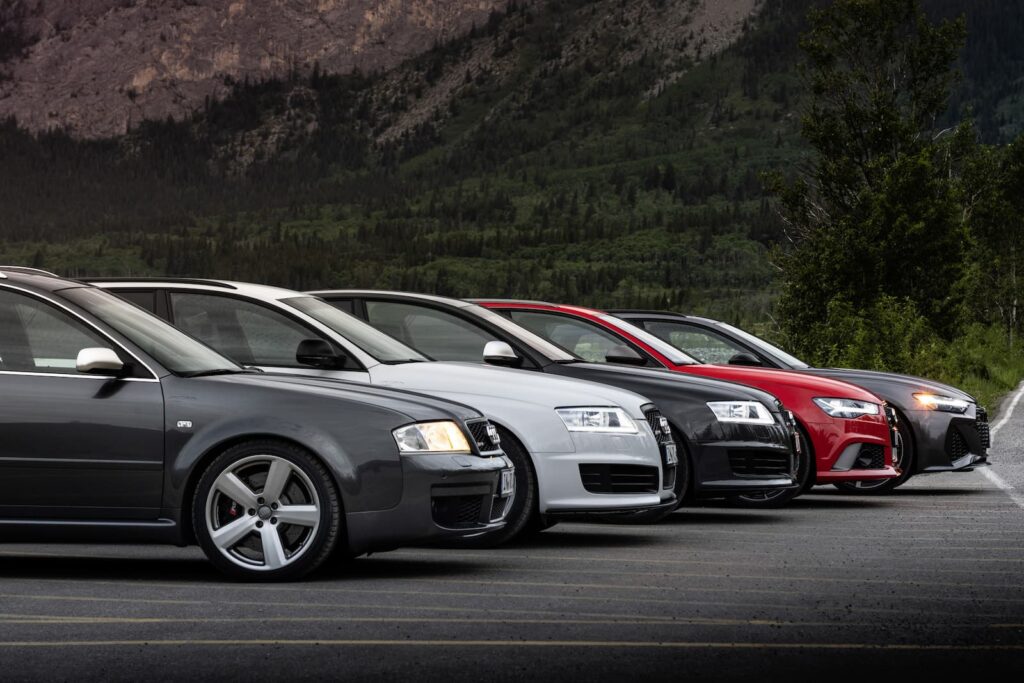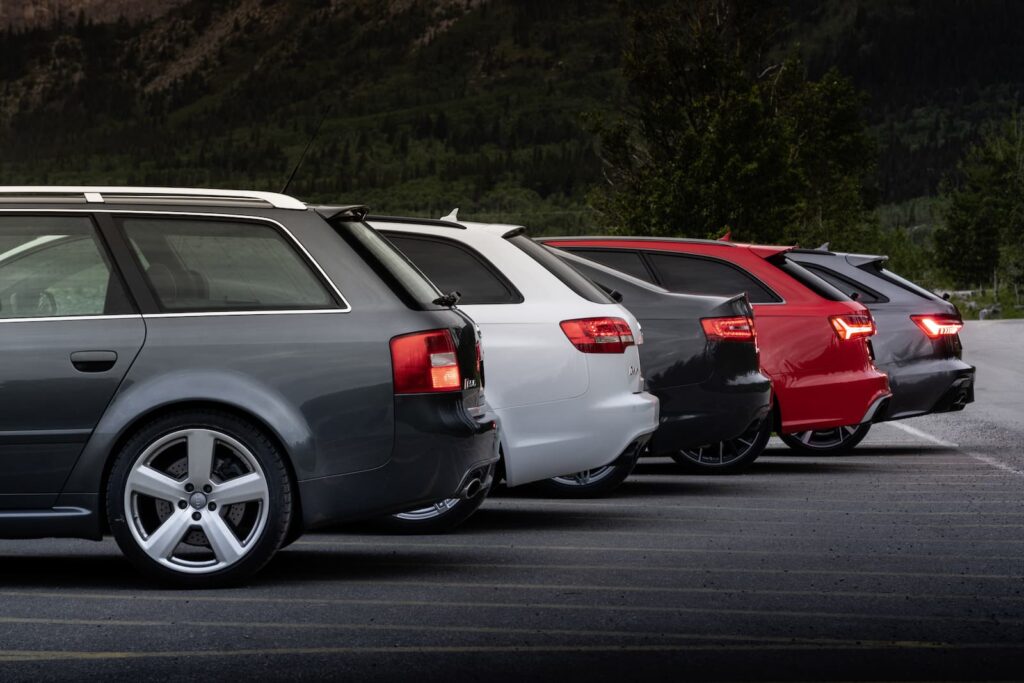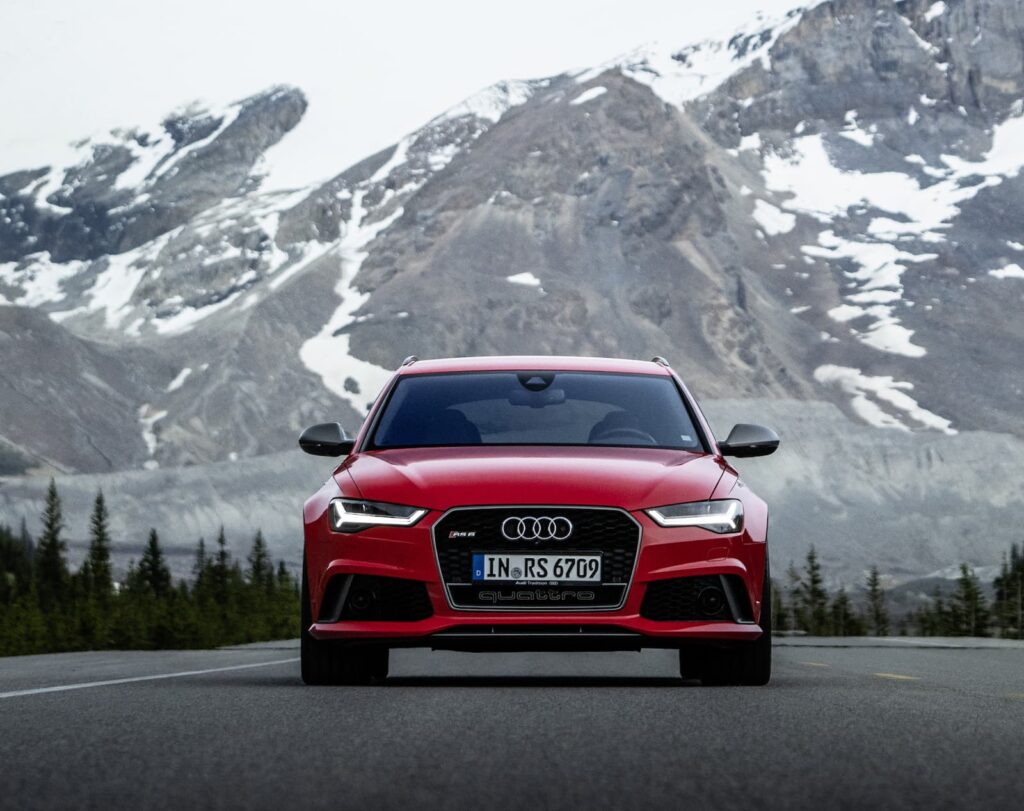There’s been no more exciting Audi Sport model than the high-performance Audi RS 6 Avant. In 20 years, it’s set the tone for Audi performance wagons with striking performance and outstanding usability. The RS 6 owes its success to its twin-turbocharged engine and all-wheel drive. The basic concept has been the same across every generation of RS 6. Its Dynamic Ride Control suspension system, which appeared in other RS models from Audi, is another example of the manufacturer’s technological leadership.
C5 RS 6 Avant - Starting Things Right

After the start of the new millennium, Audi Sport GmbH (then quattro GmbH) was faced with the question of which car to give a sporty renovation to next, following the success of the RS 4. It proved to be the perfect time for the C5 generation Audi A4. It was a car that had only recently debuted and was still fresh in people’s minds. The decision to use the C5 platform for the RS 6 meant Audi Sport GmbH could take advantage of its extensive knowledge of lightweight construction methods, which had been honed over many years.
The brand was very aware of the importance of motorsports and Audi took the racing world by storm when it made its debut at the 24 Hours of Le Mans in 1999. It followed up by taking overall wins the next three years, before passing the baton to sister-brand Bentley. Only Porsche has taken more victories at Le Mans than Audi.
Audi’s engineers at quattro GmbH worked hard to make the A6 a true sport sedan, adapting the engine, suspension, and transmission. Audi pushed the appearance of the A6 into a higher gear: it grew four centimeters (1.6 in) longer and wider than before. New skirts, wider sills, spoilers for the Avant as well as Sedan’s breakaway edges gave it a sporty appearance even when standing still. The 18” or 19” wheels emphasized this further. Two oval tailpipes completed the picture of an aggressive machine.
No other Audi offered more power under the hood in the 2002 model year. Engineers chose to utilize and 8 cylinder engine that was already doing the job for the S6, but required more refinement. This work lead to a powerful, twin-turbocharged 4.2 liter engine – however, this monster power plant wouldn’t fit in the engine bay of a standard A6. As a result the front end was extended to allow the V8 four centimeters (1.6 in) more installation space.
Interestingly, the engine that powered the first RS 6 wasn’t tuned anywhere in Germany – instead, Cosworth, a British engine-manufacturing company, produced an impressive 450 PS and 560 Nm of torque from the Audi-sourced V8. The RS 6’s power and performance sent a strong message to the competition. For comparison’s sake, the 2002 DTM title-winning Audi also produced 450 PS.
All that power necessitated greater control for the driver. Unfortunately, this lead to the beginning of the end of the manual transmission era. Rather, a torque-converter transmission was utilized for the first time, allowing the RS quicker gear shifts. The RS 6 was equipped with five driving modes that enabled it to accelerate from 0 to 100 km/h (62 mph) in 4.7 seconds.
Audi’s newly developed Dynamic Ride Control (DRC) suspension helps to ensure that the RS 6 Avant and Sedan impress with their ideal balance between comfort and sportiness even in everyday driving. Dynamic Ride Control uses two diagonally opposite hydraulic shock absorbers to counteract the motion in a vehicle’s body without delay, and without utilizing any electronics.
All first generation RS 6 models were built both on the production line and by hand. This left the cars driveable, but far from complete until they were moved from the plant in Neckarsulm to a nearby hall. It was there that quattro GmbH workers finalized each car – a process that took about 15 hours on a hydraulic lift.
Toward the end of the C5 series Audi boosted the power from the twin-turbocharged V8 from 450 to 480 PS, while leaving torque at 560 Nm. This was in addition to adding a “plus” to the end of the model name. With the additional power output the top speed increased from 250 km/h (155 mph) to 280 km/h (174 mph).

C6 RS 6 Avant - More Power, More Cylinders
Six years after the first RS 6, the second generation launched in 2008. Audi not only increased the power and displacement of the engine, but also added two more cylinders for good measure. The V10 was still equipped with two turbochargers but now had five liters of displacement. At the end of the day that meant the engine provided 580 PS and 650 Nm of torque. At that time that output exceeded even the Audi R8 and R8 GT. Audi built the largest RS engine ever for three years.
An upgraded six-speed automatic transmission was paired with the V10, allowing a top speed of over 300 km/h (186 mph) for the first time with the RS 6 plus. The standard RS 6 maxed out at 250 km/h (155 mph), although a higher top speed of 280 km/h (174 mph) was available for an additional cost. The RS 6 Avant used all that power and the upgraded transmission to reach 100 km/h (62 mph) in 4.6 seconds. The increased power naturally required greater stopping power, leading to the first ceramic brakes as an option for the RS 6. The DRC suspension was again utilized to ensure both a sporty and comfortable ride.
Completing the C6 run of the RS 6 was a limited run of 500 vehicles – either an RS 6 plus Sport or an RS 6 plus Audi Exclusive. These final 500 cars included a numbered badge, special five-spoke alloy wheels, and exclusive upgrades to the car’s interior.

C7 RS 6 Avant - Fewer Cylinders, More Torque

Audi faced plenty of criticism in 2013 with the move to a twin-turbocharged eight-cylinder engine with only 4 liters of displacement, the smallest engine in the history of the RS 6. The sedan was discontinued, although its spirit lived on in the RS 7 Sportback.
Audi quickly assuaged everyone’s concerns with a new model that left the previous RS 6 in the dust. The C7 RS 6 shed quite a lot of weight thanks in part to a much greater usage of aluminum, taking around 265 lbs off the car. The Avant stayed true to its oversized beginnings, this time six centimeters (2.4 in) wider than the conventional A6. Audi was able to save even more weight compared to the standard A6, while also improving weight distribution to about 55:45.
The RS 6 showed no signs of slowing down, even being short two cylinders and 20 PS, it boasted an impressive 700 Nm of torque. Paired with a new eight-speed tiptronic transmission, it took just 3.9 seconds to hit 100 km/h (62 mph) – half a second quicker than the previous model while the instrument cluster displayed a top speed of 305 km/h (190 mph). All of that speed actually came with a 30% lower rate of fuel consumption compared to the previous iteration thanks to the decreased weight as well as the capability to deactivate four cylinders when they weren’t needed.
This time around Audi equipped the RS 6 with an air suspension to provide a more comfortable ride. The car sat 20 mm lower and the more aggressive tuning along with the adaptive air suspension provided a more enjoyable driving experience on a day-to-day basis. Over time Audi engineers produced more power from the four liter engine, reaching 605 PS and, courtesy of the overboost function it was able to produce as much as 750 Nm of torque. Although the C7 RS 6 Avant was greatly desired by many enthusiasts in the US, unfortunately we had to wait a bit longer to get our hands on a domestic-spec RS 6 Avant.
The fourth generation of the RS 6 Avant hit dealerships in 2019, just three years shy of the model’s 20th birthday. Still powered by a four liter, twin-turbocharged engine that produces 600 PS and 800 Nm of torque, it lives up to its storied history. New for this generation is the 48 volt hybrid system that further improves fuel efficiency. Although the hybrid system adds a bit to the weight of the new RS 6, it’s faster than ever – able to accelerate to 100 km/h (62 mph) in just 3.6 seconds.
Audi utilizes all-wheel steering to improve the car’s stability at high speeds, while also reducing the turning radius when at low speeds – it even makes parking easier! The RS 6 Avant is offered with optional trailer hitches and can be configured with an air suspension or the DRC suspension.
Most noticeable, in comparison to earlier generations, is the entirely unsubtle appearance of the RS 6 Avant. Many enthusiasts considered the earlier models to be understated and even qualified them as “sleepers” to the uninitiated, it’s easy to see that the current RS 6 Avant is something more than a standard A6. The only things it shares with the A6 Avant are the roof, front doors, and tailgate – everything else has been tweaked specifically for the RS edition – the body is 8 cm wider (3.15 in), while an independent hood is offered for the first time.
Due to high demand and pressure from automotive enthusiasts, the RS 6 Avant is now available in the US. Unlike in 2003 when the RS 6 Sedan was exclusively available in the US market and limited to only 860 examples, the new RS 6 Avant seems to be hitting its stride with more buyers every week. We’ll have to watch the values of the original RS 6 and earlier RS 6 Avants to see what, if any impact the availability of the C8 RS 6 Avant has on the collector and enthusiast market.
